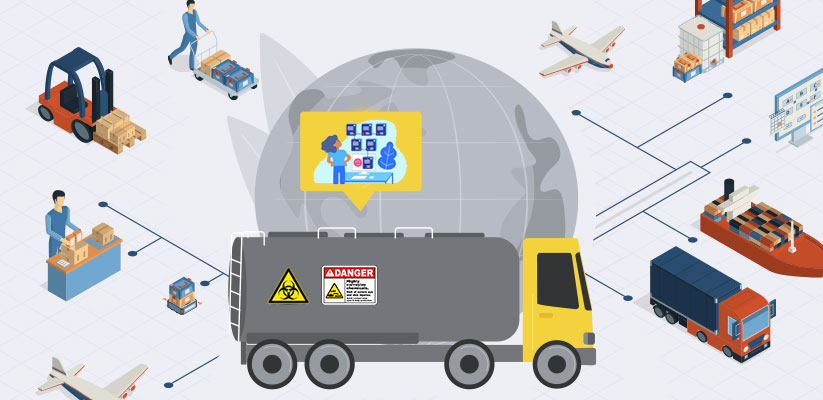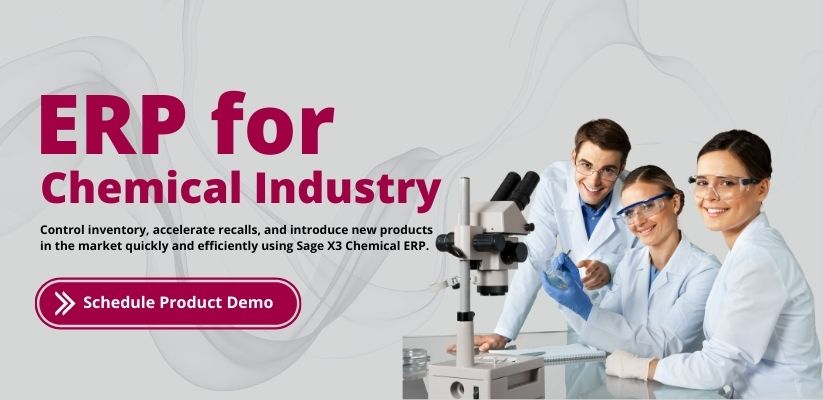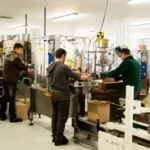Summary: The chemical manufacturing industry has recently come under immense pressure due to various factors, including fluctuating markets, product commoditization, harsh chemical regulations, and the recent coronavirus pandemic. Therefore, companies need to put new systems in place to better control the complexities and intricacies in the chemical industry.

Chemical regulations are becoming more complex worldwide. Developments in technology are also bringing ground-breaking changes in the way companies function. Today, you need autonomous software that can automatically monitor, control, and execute several critical tasks without the need for human intervention.
This article will shed light on the challenges in implementing traceability data systems across each business department and how you can submit high-quality data required by different regulatory bodies for inspection.
Get ready to embrace regulatory challenges.
Chemical manufacturing is a highly regulated industry across the world. Therefore, companies need to comply and remain up-to-date with regulatory changes. Lately, government bodies are mandating strict rules and regulations for chemical manufacturers. And if you fail to comply with any of them, you may land in serious trouble.
Following are a few evolving industry standards that you must comply with:
-
Global Harmonized System (GHS)
GHS is an internationally accepted system for classifying and conveying information regarding the hazardous properties of consumer and industrial chemicals. Although countries aren’t required to follow the agreement necessarily, several of them have mandated many local or national laws to implement its criteria.
-
Occupational Safety and Health Administration (OSHA)
OSHA, which comes under the US Department of Labor, complies with the principles of GHS. OSHA is responsible for maintaining safe, secure, and healthy working conditions for employees and employers in private and public sectors. Their primary objective is to create, enforce, and monitor standards by providing education, training, and providing assistance.
-
Strategic approach to International Chemicals Management (SAICM)
SAICM is an international framework that ensures appropriate management of chemicals across their lifecycle.
Chemical regulations might differ based on the location and size of your business. But remember that regulatory compliances and regional standards have become necessary for chemical manufacturers. In addition, you must comply with product labeling regulations formulated by the government; otherwise, launching products in the market might become a challenge for you.
Keep in mind that regulators, lawmakers, and the general public regularly raise concerns regarding environmental issues. Moreover, these pressures will increase significantly in the coming days. Therefore, it would be wise for your company to adopt principles of the circular economy like Reduce, Reuse & Recycle.
-
Registration, Evaluation, Authorization, and Restriction of Chemical Substances (REACH)
Businesses in the European Union (EU) need to identify and manage risks related to substances they produce and market in that region. By complying with REACH, businesses demonstrate that they use appropriate safety measures while using materials and have risk management procedures in place.
<<<Also Read: ERP for Chemical Industry: Proven Formula for Success and Growth>>>
Comply with chemical regulations through traceability
Government regulations mandate that chemical manufacturers record crucial data from operational processes in case there is a recall or quality audit. Traceability also allows companies to flag errors in the different manufacturing methods employed to produce chemical products.
Remember that relying on guesswork or assumptions is not ideal while making decisions. Instead, it would be best to have a comprehensive understanding of the total operational cost and its implications. For this, you need to do an end-to-end analysis of processes to measure how effective they are.
The most efficient way of implementing organizational change is by identifying operational inefficiencies. Once that is done, you can brainstorm what technologies you need to enhance your market competitiveness and get ahead of your competitors during challenging times.
You must immediately implement traceability data systems that record high-quality data. This pile of data can be submitted to regulatory bodies for inspection whenever required. As the complexity of chemical regulations grows further, the primary challenge is to ensure critical business data is made accessible and traceable throughout the business. For this, you need to implement ERP for chemical manufacturing that integrate traditionally siloed workplaces.
Which technology can help you achieve your goal?
In the VUCA (Volatile, Uncertain, Complex, and Ambiguous) environment we live in, technology should seamlessly fit with your business model. You would want to integrate various business management solutions, such as CRM, MES and ERP system, to better share data, improve traceability, and reduce inefficiencies across the financial systems and supply chain manufacturing.
Ask yourself the following questions to keep your traceability systems in check:
- Can I spot inefficiencies and flag errors in the manufacturing processes?
- Do I have the required systems to track products quickly and efficiently?
- Do I know the total production cost?
Apart from traceability and transparency, look for the following features while selecting an appropriate technology:
1. A 360° overview of global operations
It would be best to better understand global supply chains and third-party distributors across borders. This knowledge will help you build robust supplier relationships and understand the logistic ecosystem better.
2. Focus on innovation
Business intelligence will provide you with the required tools to identify where investments will deliver excellent returns. This way, you can adapt quickly to changing market trends and customer preferences to stay on top of the competition.
3. Become more environment-friendly
Search for the capabilities and insights you will need to procure raw materials from reliable & authentic sources. Also, enhance production methods to ensure you don’t produce or drain hazardous chemicals in the environment.
4. Tailor offerings based on the market
The technology you select should allow you to make relevant changes in your market offerings based on the demand of the local market you are serving.
5. Product and process consistency
It would be best to search for software that provides a single and multi-level BOM facility ensuring the highest product quality, consistency, and collaboration.
STAY UPDATED
Subscribe To Our Newsletter
At Sage Software Solutions (P) Ltd., we are home to world-class ERP software and CRM software that will solidify your business tech support fundamentals and enable you to build a customer-centric organization. You can also write to us at sales@sagesoftware.co.in.
Disclaimer: All the information, views, and opinions expressed in this blog are those of the authors and their respective web sources and in no way reflect the principles, views, or objectives of Sage Software Solutions (P) Ltd.






